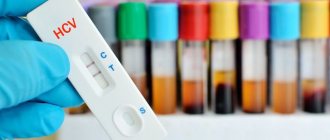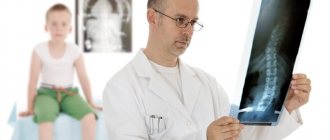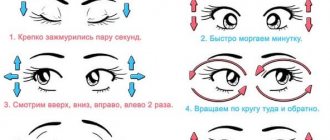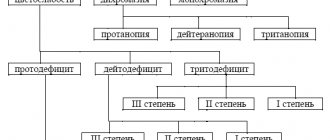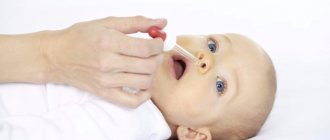Cerebral palsy, popularly known as cerebral palsy, is not a separate disease, it is a whole complex of various abnormalities and pathologies. Scientists have proven that the disease is most often not transmitted genetically, however, a certain amount of heredity is still present. Some potential parents, having studied the statistics of morbidity in children, are afraid to plan offspring. After all, who knows what causes such pathology in children. We will try to cover the causes of cerebral palsy in children as clearly as possible and give readers information on what to do if a child is diagnosed with such a disease.
Most often, cerebral palsy occurs due to disruption of the brain, due to the destruction of its cells due to exposure to certain negative factors on the body. In addition, various injuries, including prenatal and postpartum, can provoke the development of the disease. Most children with cerebral palsy are born underweight.
The disease can occur before childbirth, after childbirth, and directly during childbirth. Cerebral palsy is chronic and does not progress. Many parents may notice a significant deterioration in the child's condition, but in fact the disease does not develop.
The fact is that as a child gets older, his brain constantly develops and grows, and some previously hidden pathologies begin to manifest themselves more clearly. This does not mean that the child is getting worse, just that the disease, passing through all stages of its development, acquires new symptoms. Such false progression can cause various secondary pathologies, such as stroke, anesthesia, epilepsy.
Important! Cerebral palsy is not a contagious disease and is not inherited. High-quality rehabilitation helps the child settle into society, significantly improve the condition of the body and quality of life.
Reasons for the development of cerebral palsy
Cerebral palsy develops in a child in the womb, during childbirth, or in the first weeks of a child's life. Most often, the cause is various injuries, abnormal development of the fetus or death of brain cells. Let's consider the main reasons that provoke the development of a pathological condition in children.
- The main impetus for the development of cerebral palsy is hypoxia; it is this disease that negatively affects those areas of the brain that are responsible for movement, coordination and balance. As a result of the development of such a process, the child cannot move normally, his muscle tone decreases or is lost, and paralysis is formed.
- Often, cerebral palsy occurs due to a pathological condition of pregnancy , for example, premature placental abruption or late toxicosis.
- The development of cerebral palsy can be influenced by various infections (herpes, syphilis, rubella).
- , such as diabetes, hypertension, and heart disease, cause great harm to the fetus
- If a woman suffers a serious injury during pregnancy , this can also affect the health of the baby.
I was prompted to write an article by a conversation between two parents of special children. Its meaning was that one mother convinced another to go to the doctor “famous name” because “he puts even hopeless children on their feet.” In the end I convinced her. They collected money and suitcases, grabbed their children and set off to seek happiness and health. As it turned out, the popular doctor only accepts after a paid consultation (very expensive), and not every child is accepted for treatment (as a rule, the “easiest” cases). Moreover, he accepts it at home without a medical license. As a result, one mother was refused, and the second underwent an expensive rehabilitation course with very mediocre results. Having devoted very little time to studying reviews about this specialist, they found out that there were no less negative ones than positive ones. True, in the official group of this doctor they were removed to create an exclusively positive image. The “magic pill,” alas, turned out to be nothing.
“It’s a good advertisement,” I thought. The flow of those wishing to do so does not fade over time, and even word of mouth is unable to open people’s eyes to the true nature of his activities. Why is this happening? Then I remembered a topic that was very popular on the Internet several years ago - sprays for cerebral palsy (and much more). You probably also received personal messages from “ordinary mothers” who experienced the miraculous properties of these sprays on themselves and their relatives. They supposedly could cure anything: loss of vision, ulcers, cerebral palsy, diabetes and even cancer! Agree, it’s hard to believe this now. However, at that time a very wide advertising campaign was launched - every second publication on VK was devoted to reviews from parents or stories from “titled” doctors about an incredible discovery. During the inspection, it turned out that these sprays are distributed according to the principle of network marketing, and reviews are recorded by their distributors, who need to “sniff” more spray cans. There is nothing to say about the results of using these sprays. There is nothing because there are zero results.
Unfortunately, there were those who believed in ubiquitous advertising. Someone has been misled by this dishonest marketing. Someone believed it because they had already tried all the other available ways to heal. People who are in a difficult and hopeless situation cling to every chance, to any hope of recovery. This is our psychology.
I don’t have children yet, but I know about cerebral palsy firsthand: for several years now, every day I meet dozens of boys and girls with neurological problems. Each of them is special to me, but not because of the diagnosis, but because they are individuals, with their own interests, fears and desires. I talk a lot with them and with their parents, trying to understand what path they are going through.
The first characteristic signs of pathology in children
Sometimes the first signs of cerebral palsy can be noticed immediately after the baby is born, and sometimes months pass before parents begin to sound the alarm. The main symptom of cerebral palsy is impaired motor function. The sooner parents recognize the disease and begin rehabilitation, the more active the child will lead a life in the future.
Children with cerebral palsy, much later than healthy children, begin to hold their heads up, speak, crawl and walk independently. In this case, the muscles can be either in a very relaxed state, or, conversely, in excessive tension. Often the limbs of babies may be in the wrong position, the child is bothered by seizures, they appear already in infancy or at a later age.
Medical rehabilitation of patients with cerebral palsy
In addition to clinical, laboratory, functional diagnostics and physiotherapeutic methods of recovery, treatment includes the selection of medications. In the case of cerebral palsy, the main goal of drug therapy is to control seizures, relieve muscle spasms and pain.
For each patient undergoing rehabilitation after a stroke, traumatic brain injury or cerebral palsy, an individual drug therapy plan is selected based on the clinical recommendations of specialized doctors at our center.
Cerebral palsy - symptoms of the disease
Symptoms of cerebral palsy are usually difficult to miss, and they manifest themselves not only in motor function. Often the child’s speech and visual function are impaired. Children cannot normally navigate in space, begin to perceive the world around them differently, and mental disorders and dementia may develop. Sometimes problems arise with the urinary system and stomach.
The most difficult time to notice cerebral palsy is in the first months of a baby’s life. You should definitely show your child to a doctor if the following symptoms :
- a newborn baby does not blink at a loud sound;
- by 4 months the baby does not move his head when he hears the mother’s voice or other sounds;
- after 6-7 months from birth, the child cannot sit independently;
- when the baby is one year old, he does all actions with one hand, does not speak, does not walk;
- convulsions and strabismus appeared;
- The child’s movements are either very slow or, on the contrary, excessively abrupt.
Spastic diplegia (Little's syndrome). Tetraparesis with spasticity in the legs.
The most common type of cerebral palsy (3/4 of all spastic forms) is expressed in spastic paresis of mainly the lower extremities. Favorable prognosis for the possibility of social adaptation. The degree of social adaptation with normal mental development can reach the level of a healthy person. Spastic diplegia is characterized by the early formation of contractures, deformities of the spine and joints. Mostly diagnosed in children born prematurely. Pathology of the cranial nerves is common: convergent strabismus, optic nerve atrophy, hearing impairment, delayed mental and speech development, dysarthria, etc., including those caused by environmental influences on the child (insults, segregation). The patient’s psyche suffers, but not as much as in other forms of cerebral palsy. The prognosis for motor abilities is less favorable than for hemiparesis.
Forms of cerebral palsy and diagnosis
Depending on the degree of brain damage, symptoms and forms of the disease may vary. Sometimes cerebral palsy manifests itself mildly, but sometimes the pathology can cause serious harm to the body.
There are the following forms of the disease:
- Hemiparetic - only one hemisphere of the brain is affected, and only one side of the body does not function well. The most common paralysis of the right side of the body with this form of pathology. Among all cases of cerebral palsy, this form is more common than others. The disease affects the cortical parts of the brain.
- Hyperkinetic – the disease manifests itself in the form of sudden and uncontrolled movements. Occurs in approximately 25% of all cases of the disease. It differs significantly from all other forms by the presence of hyperkinesis (involuntary muscle contractions, and, consequently, movements). The peculiarity of the hyperkinetic form is a strong violation of muscle tone with a slight disturbance in the mental development of the baby.
- Atonic-astatic - in this situation the cerebellum suffers, causing the child to lose a sense of orientation and balance. The difference between this form is not an increase in muscle tone, but, on the contrary, its decrease. The child’s movements are preserved, but poorly coordinated, which prevents him from walking or standing independently. The child’s speech is impaired to one degree or another, sometimes words are almost impossible to understand. In half of all cases of the atonic-astatic form of cerebral palsy, debility or imbecility is noted.
- Spastic diplegia – the part of the brain that is responsible for movement is affected, causing partial or complete paralysis of the limbs, mainly the lower ones, while the upper ones retain mobility. Increased muscle tone. Due to damage to the nerves in the brain, the child develops strabismus. The nasolabial folds are smoothed, and the tongue, as a rule, is deviated to one side, and, consequently, speech is impaired. The child’s psyche suffers, but not as much as in other forms of the disease.
- Double hemiplegia – the child cannot walk or sit, hold his head up, or stand on his own. This form of cerebral palsy is considered the most severe. On the part of the child’s mental development, there are such deviations as debility, imbecility, and idiocy.
Methods for diagnosing the disease
There are no special measures or procedures for identifying cerebral palsy. The specialist makes a diagnosis based on the main symptoms and signs of cerebral palsy. If a child cannot move fully, is delayed in development, or has impaired muscle tone, he is referred to a neurologist for more detailed observation and research.
Using electrophysiological methods, it is possible to determine whether a child really has cerebral palsy, or whether pathological processes are associated with hereditary neuralgic diseases. An MRI can help determine how much of the brain is affected and which areas are affected.
Symptoms
Even when the condition is present at birth, symptoms of cerebral palsy (CP) may not be noticed until the child is between 1 and 3 years of age. This happens due to the growth characteristics of the child. Neither doctors nor parents may pay attention to disturbances in the child’s motor sphere until these disturbances become obvious. Children may retain newborn reflex movements without age-appropriate development of movement skills. And sometimes the first to pay attention to a child’s underdevelopment are nannies. If cerebral palsy is severe, then the symptoms of this disease are already detected in the newborn. But the appearance of symptoms depends on the type of cerebral palsy.
The most common symptoms of severe cerebral palsy are
- Swallowing and sucking problems
- Faint scream
- Cramps.
- Unusual child poses. The body can be very relaxed or very strong hyperextension with arms and legs spread out. These positions are significantly different from those that occur with colic in newborns.
Some problems associated with cerebral palsy become more obvious over time or develop as the child grows. These may include:
- Muscle wasting in injured arms or legs. Problems in the nervous system impair movement in the injured arms and legs, and muscle inactivity affects muscle growth.
- Pathological sensations and perceptions. Some patients with cerebral palsy are very sensitive to pain. Even normal everyday activities such as brushing your teeth can be painful. Pathological sensations may also affect the ability to identify objects by touch (for example, distinguish a soft ball from a hard one).
- Skin irritation. Drooling, which is common, can lead to irritation of the skin around the mouth, chin and chest.
- Dental problems. Children who have difficulty brushing their teeth are at risk for gum disease and tooth decay. Medicines used to prevent seizures may also contribute to the development of gum disease.
- Accidents. Falls and other accidents are risks associated with impaired coordination of movements, as well as in the presence of convulsive attacks.
- Infections and somatic diseases. Adults with cerebral palsy are at high risk of heart and lung diseases. For example, in severe cases of cerebral palsy, problems arise with swallowing and when choking, some of the food enters the trachea, which contributes to lung diseases (pneumonia).
All patients with cerebral palsy (cerebral palsy) have certain problems with body movement and posture, but many babies do not show signs of cerebral palsy at birth and sometimes only nannies or caregivers are the first to pay attention to deviations in the child’s movements that contradict age criteria. Signs of cerebral palsy may become more obvious as the child grows. Some developing disorders may not become apparent until after the child's first year. The brain injury that causes cerebral palsy does not appear for a long time, but the effects may appear, change, or become more severe as the child gets older.
The specific effects of cerebral palsy depend on its type and severity, level of mental development and the presence of other complications and diseases.
- The type of cerebral palsy determines the child's motor impairment.
Most patients with cerebral palsy have spastic cerebral palsy. Its presence can affect both all parts of the body and individual parts. For example, a child with spastic cerebral palsy may have symptoms primarily in one leg or one side of the body. Most children usually try to adapt to impaired motor functions. Some patients can even live independently and work, requiring only occasional assistance from others. In cases where there are impairments in both legs, patients require a wheelchair or other devices that compensate for motor functions.
Complete cerebral palsy causes the most severe problems. Severe spastic cerebral palsy and choreoathetoid cerebral palsy are types of complete paralysis. Many of these patients are unable to care for themselves due to both motor and intellectual impairments and require constant care. Complications such as seizures and other long-term physical consequences of cerebral palsy are difficult to predict until the child is 1 to 3 years old. But sometimes such predictions are not possible until the child reaches school age, and in the process of studying, communicative intellectual and other abilities can be analyzed
- The severity of mental impairment, if any, is a strong predictor of daily functioning. Slightly more than half of patients who have cerebral palsy have some degree of intellectual disability. Children with spastic quadriplegia usually have severe cognitive impairment.
- Other conditions, such as hearing impairments or problems, often occur with cerebral palsy. Sometimes these disorders are noted immediately; in other cases they are not detected until the child gets older.
In addition, just like people with normal physical development, people with cerebral palsy experience social and emotional problems throughout their lives. Since their physical defects exacerbate problems, patients with cerebral palsy need the attention and understanding of other people.
Most patients with cerebral palsy survive to adulthood, but their life expectancy is somewhat shorter. Much depends on how severe the form of cerebral palsy is and the presence of complications. Some patients with cerebral palsy even have the opportunity to work, especially with the development of computer technology, such opportunities have increased significantly.
Cerebral palsy is classified according to the type of body movement and posture problem.
Spastic (pyramidal) cerebral palsy
Spastic cerebral palsy is the most common type. A patient with spastic cerebral palsy develops stiff muscles in some parts of the body that are unable to relax. Contractures occur in damaged joints, and the range of movements in them is sharply limited. In addition, patients with spastic cerebral palsy have problems with coordination of movements, speech disorders and disturbances in swallowing processes.
There are four types of spastic cerebral palsy, grouped according to how many limbs are involved. Hemiplegia - one arm and one leg on one side of the body or both legs (diplegia or paraplegia). They are the most common types of spastic cerebral palsy.
- Monoplegia: Only one arm or leg is impaired.
- Quadriplegia: Both arms and both legs are involved. Usually in such cases there is damage to the brain stem and, accordingly, this is manifested by swallowing disorders. In newborns with quadriplegia, there may be disturbances in sucking, swallowing, weak crying, and the body may be weak or, on the contrary, tense. Often, upon contact with a child, hypertonicity of the torso appears. The child may sleep a lot and not show interest in his surroundings.
- Triplegia: Either both arms and one leg or both legs and one arm are caused.
Non-spastic (extrapyramidal) cerebral palsy
Non-spastic forms of cerebral palsy include dyskinetic cerebral palsy (divided into athetoid and dystonic forms) and ataxic cerebral palsy.
- Dyskinetic cerebral palsy is associated with muscle tone that ranges from moderate to severe. In some cases, there are uncontrollable jerks or involuntary slow movements. These movements most often involve the muscles of the face and neck, arms, legs, and sometimes the lower back. The athetoid type (hyperkinetic) type of cerebral palsy is characterized by relaxed muscles during sleep with minor twitching and grimacing. If the muscles of the face and mouth are involved, there may be disturbances in the process of eating, drooling, choking on food (water) and the appearance of inappropriate facial expressions.
- Ataxic cerebral palsy is the rarest type of cerebral palsy and affects the entire body. Pathological movements occur in the torso, arms and legs.
Ataxic cerebral palsy is manifested by the following problems:
- Body imbalance
- Impaired precise movements. For example, the patient cannot reach the desired object with his hand or perform even simple movements (for example, bringing a cup directly to the mouth). Often only one hand is able to reach the object; the other hand may shake as it tries to move the object. The patient is often unable to button clothes, write, or use scissors.
- Coordination of movements. A person with ataxic cerebral palsy may walk with too long steps or with their feet spread wide apart.
- Mixed cerebral palsy
- Some children have symptoms of more than one type of cerebral palsy. For example, spastic legs (symptoms of spastic cerebral palsy related to diplegia) and problems with facial muscle control (symptoms of dyskinetic CP).
- Total body cerebral palsy affects the entire body to varying degrees. Complications from cerebral palsy and other health problems are most likely to develop when the entire body is involved rather than isolated parts.
Features of children with cerebral palsy
The main difficulty that arises in children with cerebral palsy is the performance of complex movements, which is why a person cannot move properly, take care of himself in everyday life, and socialize in society.
The child begins to lag behind in development. He cannot study for a long time, studying is very difficult for him, and it is very difficult to concentrate on one thing. Due to slowness, exact sciences are difficult for children; sometimes children can hardly add even simple numbers in their minds.
Even if a child has good intelligence, due to disorders in the brain, he cannot quickly absorb information, unlike his peers. Children with cerebral palsy often have speech disorders. This is due to low tone of the muscles that are responsible for producing sounds.
Sometimes sick children can be overly shy, they do not show initiative in learning and playing, have difficulty finding a common language with other children, do not want to make contact with them, do not want to develop and overcome their illness.
Types of cerebral palsy
Due to the variety of manifestations of cerebral palsy, there are many different classifications. The main principle for dividing symptoms is the degree of damage and the number of limbs in which movement is difficult:
| Syndrome | Changes in the brain | Common reasons |
| Spastic diplegia |
|
|
| Spastic tetraplegia |
|
|
| Hemiplegia | More often – cerebral hemorrhage |
|
| Extrapyramidal form | Damage to a specific area of the brain (basal) |
|
Spastic diplegia
This is a bilateral dysfunction of the limbs of the same name, more often the legs. The hands completely or almost completely retain their functions. This form of paralysis is the most common.
Although minor disturbances can be noticed already in a newborn, the most striking manifestations begin with the period of crawling of the child.
- When crawling, the child moves his arms evenly, but pulls up his legs. In severe cases, crawling is difficult
- In the lower extremities, tone is increased, tendon reflexes are strengthened (detected at an appointment with a neurologist)
- With support under the armpits, crossing the limbs is possible
- The onset of walking is delayed, the child walks on tiptoes
- In severe cases – growth retardation of the lower extremities
In most cases, intelligence is preserved; speech may be slightly impaired. Convulsive syndrome occurs less frequently than with other types of cerebral palsy. In mild cases, children are able to take care of themselves and learn new skills.
Spastic tetraplegia
This is paralysis of four limbs - the most severe and poorly corrected form of cerebral palsy. It occurs as a result of extensive brain damage and is often accompanied by mental retardation and epileptic seizures.
- From birth, children may have difficulty swallowing
- Tone is increased in all four limbs, often more so on one side
- Crawling, walking and other skills are impossible or difficult
- Often – epilepsy, speech impairment, intellect, vision
- Frequent combination with microcephaly (reduced head size) and other developmental defects
The prognosis for the child’s mental development is also unfavorable: most have moderate or severe mental retardation.
Hemiplegia
This is a dysfunction of the arms and legs of the same name, most often on the right. The hand suffers more. At birth, all reflexes are preserved, but as the child develops, a decrease in hand function on the affected side becomes noticeable.
- The tone in the hand is high, it can be bent in all joints and pressed to the body
- balance and sitting and standing postures are formed almost on time
- intelligence most often does not suffer
- convulsions may occur
Extrapyramidal (hyperkinetic) form
This is a special type of cerebral palsy. The defeat occurs due to incompatibility between the blood of mother and fetus or due to severe prematurity.
- tone is often reduced
- children have trouble holding their head up
- later episodes of hypertonicity and violent movements occur
- independent walking becomes possible after 4-6 years
- Swallowing, pronunciation of words and sounds may be impaired
- intelligence remains intact in most cases
Violent movements with cerebral palsy are of the following types:
- Choreiform movements - sudden, rapid movements of the hips and shoulders
- Athetoid movements - worm-like, slow, twisting movements of the hands and feet
- Mixed form - athetosis and chorea at the same time
All violent movements intensify during stress and emotional reactions, decrease in a calm state and completely disappear during sleep.
Treatment of cerebral palsy and principles of rehabilitation
No matter how sad it may sound, it is almost impossible to completely cure cerebral palsy in a child. During treatment, it is important to restore motor function as much as possible. A child must learn to care for himself, live in society, communicate with other people, study and live a full life.
Treatment should be aimed at eliminating the causes that led to its development. In addition, it is necessary to treat concomitant diseases that complicate the child’s condition. It is necessary to constantly engage in physical therapy with the child, attend various procedures, and develop intellectual abilities.
There is no universal technique that would help everyone get rid of cerebral palsy. Good results can be achieved if you act comprehensively:
- taking medications to normalize muscle tone, eliminate cramps and spasms;
- physiotherapy;
- massage;
- orthopedic correction;
- the use of special suits, exercise equipment and walkers.
Rehabilitation of children with cerebral palsy should consist of therapeutic exercises, massage, light labor, manual procedures and hardening. The child must eat properly and receive sufficient amounts of vitamins and minerals. The child's immunity must be strong.
You can play active games with your child, thereby stimulating him to be mobile. Swimming, training for balance and spatial orientation have a good effect. The baby must be constantly monitored by specialists and follow the program that the doctor will develop individually.
Severity of cerebral palsy
All of the above symptoms of cerebral palsy can manifest themselves to varying degrees. The severity most often depends on the size of the brain lesion. The time when physical therapy and speech correction classes begin plays a big role.
- Mild degree. The child can move without assistance, perform household tasks, attend regular school and master most professions.
- Average degree. The child needs help from outsiders, but socialization is possible.
- Severe degree. The child is absolutely dependent on others and is unable to take care of himself.
Working with children with cerebral palsy
Features of treatment for cerebral palsy include daily work with the child. You can work with your baby at home, visit medical institutions and special centers. During the rehabilitation process, it is necessary to do everything possible so that the child’s muscles do not strain, but become stronger.
The child must learn to be resilient and cope with a heavy load. The most important thing is that the baby himself wants to be cured. Children with such diagnoses should not be socially isolated. On the contrary, the baby should communicate with friends, try to move and develop in all directions.
In the treatment of a child, it is necessary to involve as many doctors as possible, such as an orthopedist, surgeon, neurologist, psychologist. You definitely need to work with a speech therapist and physical therapy trainer. If possible, you should visit special centers for the treatment of cerebral palsy as often as possible.
Comprehensive rehabilitation program for cerebral palsy in children and adults
The course is based on tools that will help correct the impairments caused by cerebral palsy and strengthen the patient’s socialization skills, ability to learn and self-care. A large role in this is played by therapeutic exercises, hydrokinesitherapy, kinesiotherapy, as well as staying in the sensory room.
Our rehabilitation center has extensive experience in working with cerebral palsy. This helps to develop effective recovery programs taking into account the individual characteristics of each patient.
The course includes:
- Individual kinesiotherapy - 20 procedures;
- Individual mechanotherapy – 20 procedures;
- Individual hydrokinesitherapy – 8 procedures;
- Classic massage - 10 procedures;
- Physiotherapy - 20 procedures;
- Balance training - 10 procedures;
- Speech therapist - 8 lessons;
- Neuropsychologist - 4 sessions;
- Ergotherapy - 6 procedures;
- Social adaptation - 14 procedures.
To create an optimal course of recovery, each patient undergoes diagnostics, which helps determine the degree of development of the disease, the specificity and complexity of the disorders.
Examination by medical specialists:
- neurologist;
- therapist;
- physiotherapist;
- physical therapy doctor;
- urologist;
- psychologist.
During the diagnostic process the following is carried out:
- clinical blood test studies;
- general blood and urine analysis;
- analysis for the presence of infections;
- ECG;
- chest x-ray;
- x-ray of joints and bones;
- Ultrasound of the kidneys, ureters, bladder, abdominal and pelvic organs.
After completing a course of recovery and adaptation, patients with cerebral palsy use in real life the practical skills of self-care, work and everyday life acquired in our center. They cope with physical and mental tasks more confidently, become more socially active, and cope more easily with difficulties caused by a neurological disease. In reviews of the treatment and rehabilitation of cerebral palsy, our patients and their relatives regularly thank us for our professional work.
Massage and exercise therapy
Physical therapy should consist of a set of procedures that are aimed at:
- muscle strengthening;
- elimination of spasm and tension;
- increase in range of motion;
- developing endurance;
- formation of correct walking;
- strengthening the whole body.
As for massage, it is better to have it performed by a professional massage therapist. After the session, all the child’s muscles relax, pain, tension and fatigue decrease, and it is much easier for the child to move.
Gradually, parents learn everything themselves. Over time, you can begin to do massage and light exercises at home. It is not at all necessary to have certain massage skills to simply massage the skin and relieve fatigue and tension.
The most important thing in treating cerebral palsy is movement. Don't forget about proper nutrition, a balanced diet, walks in the fresh air, and taking vitamins. The child’s body must be strong and healthy in order to fight the disease every day.
Treatment
Cerebral palsy is an incurable disease. But a variety of treatment methods help patients with cerebral palsy to minimize motor and other disorders and, thus, improve their quality of life. The brain injury or other factors that lead to cerebral palsy do not progress, but new symptoms may appear or progress as the child grows and develops.
Initial (initial) treatment
Exercise therapy is an important part of treatment that begins soon after a child is diagnosed and often continues throughout his or her life. This type of treatment may also be prescribed before diagnosis, depending on the child's symptoms.
Medications can help treat some of the symptoms of cerebral palsy and prevent complications. For example, antispasmodics and muscle relaxants help relax tight (spastic) muscles and increase range of motion. Anticholinergics can help improve limb movement or reduce drooling. Other medications may be used as symptomatic treatment (eg, anticonvulsants for seizures)
Permanent treatment
Permanent treatment for cerebral palsy (CP) focuses on continuing and adjusting existing treatment and adding new treatments as needed. Permanent treatment for cerebral palsy may include:
- Exercise therapy that can help a child become as mobile as possible. It may also help prevent the need for surgery. If the child has undergone surgical treatment, then intensive exercise therapy may be necessary for 6 months or more. Drug treatment must be constantly monitored in order to avoid possible side effects of drugs.
- Orthopedic surgery (for muscles, tendons, and joints) or dorsal rhizotomy (excision of nerves of damaged limbs), in the presence of severe problems with bones and muscles, ligaments, and tendons.
- Special orthopedic devices (braces, splints, orthoses).
- Behavioral therapy, in which a psychologist helps a child find ways to communicate with peers and this is also part of the treatment.
- Massage and manual therapy can also be used in the treatment of both the main symptoms of cerebral palsy and complications associated with impaired biomechanics of movement.
- Social adaptation. Modern technologies (computers) have made it possible to employ many patients with consequences of cerebral palsy.
